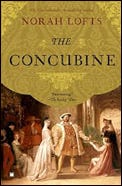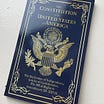The Concubine, portraying the rise and fall of Anne Boleyn as second wife to King Henry VIII, remains vibrant nearly a half century after it was first published. Lofts underscores the suspenseful thirteen-year span between the moment Anne first captures Henry’s eye and the moment she falls to the executioner’s axe. An omniscient, evenhanded narrator privy to each character's motivations humanizes them all and reminds us how many lives were sacrificed to the drama of Anne and Henry.
Anne's elder sister Mary, Henry's former mistress, warns her of the danger she faces as his new favorite and suggests she enter a nunnery. “You’d be safe. And you’re so clever; you’d be an Abbess. Nunneries are the only places where women really count for anything.” Anne could or would not hear the alarm bells.
The thoughts of Anne's lady’s maid sweep aside the pomp, mystery and veils of legend to reveal the humanity of a young and vulnerable woman. Anne, “during her spectacular career. . . was to have virulent enemies, some devoted friends; arguments about her behavior, her motives. . . but those who served her in a menial capacity never wavered in their good opinion of her.” The author's talented and well-informed pen shows the logic behind Anne’s behavior.
At an especially poignant moment, Queen Catherine realizes Henry will throw her over for Anne. “It was as though at one minute she had been standing on a safe sunlit terrace overlooking a flat sea, rippling hyacinth and sapphire and jade, and the next minute a great cold, slate-gray wave had come up and engulfed her. . . battered her against sharp rocks.”
Each chapter captures a key episode in Anne Boleyn's life: “those momentous occasions which later can be seen to have been pregnant with tragedy.” Credible historical details enrich the familiar story, so that readers may be surprised at all they learn by the end of The Concubine. (originally published 1963, copyright renewed 1997; 452 pages)





